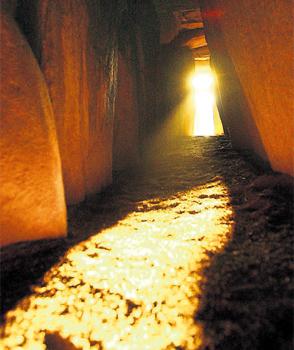 There is still snow on the ground here in the valley, leftover from The Big Snowstorm (12+ inches fell on December 18). Last evening Christopher harvested some hardy greens from unprotected garden beds, our first harvest since the snow.
There is still snow on the ground here in the valley, leftover from The Big Snowstorm (12+ inches fell on December 18). Last evening Christopher harvested some hardy greens from unprotected garden beds, our first harvest since the snow. These collards (pictured above and below, photographed today) were covered with a foot of snow for more than a week, and they are definitely not as lush-looking as collards in the height of summer, but they taste so sweet from the cold! Apparently, plants convert starches to sugars with cold temperatures, so winter greens in the brassica family are often far sweeter than those harvested in summer.
 A heavy straw mulch helps with the cold hardiness. We grow two heirloom collard varieties, Morris Heading and Georgia Southern, both of which have overwintered in our garden in years past with only heavy mulch for protection. With one layer of row cover in addition to the mulch, collards easily overwinter in our climate. We're taking the lazy approach with the remaining summer greens this winter, foregoing the row cover and just letting them go as long as they will with mulch.
A heavy straw mulch helps with the cold hardiness. We grow two heirloom collard varieties, Morris Heading and Georgia Southern, both of which have overwintered in our garden in years past with only heavy mulch for protection. With one layer of row cover in addition to the mulch, collards easily overwinter in our climate. We're taking the lazy approach with the remaining summer greens this winter, foregoing the row cover and just letting them go as long as they will with mulch.Brassicas and chard leftover from summer are about the extent of our winter harvest these days. But in related news: the hoophouse is almost ready for our first Eliot Coleman-style attempt at starting cold-hardy greens in winter for an ultra-early spring harvest. Eventually, the goal is 4-season harvest of a wide variety of salad and cooking greens, root crops, and some of the other more cold-hardy vegetables.

In the meantime, we have collards in late December, thanks to the power of mulch, the natural fortitude of the collard plant, and farmers and gardeners long ago who selected these varieties over time for cold-hardiness.
Winter greens are such a welcome treat. My old friend Andrew was in town last night and we shared a hearty winter meal of fresh sauteed collards, black beans that we grew and last summer, and Flying Cloud Farm sweet potatoes, all seasoned with a healthy amount of Creole garlic cured last July. Yum.
Morris Heading collards, above, form a loose cabbage-like head which falls apart when harvested, offering up pale, tender, blanched inner leaves.





 Q. The fava bean is:
Q. The fava bean is:




